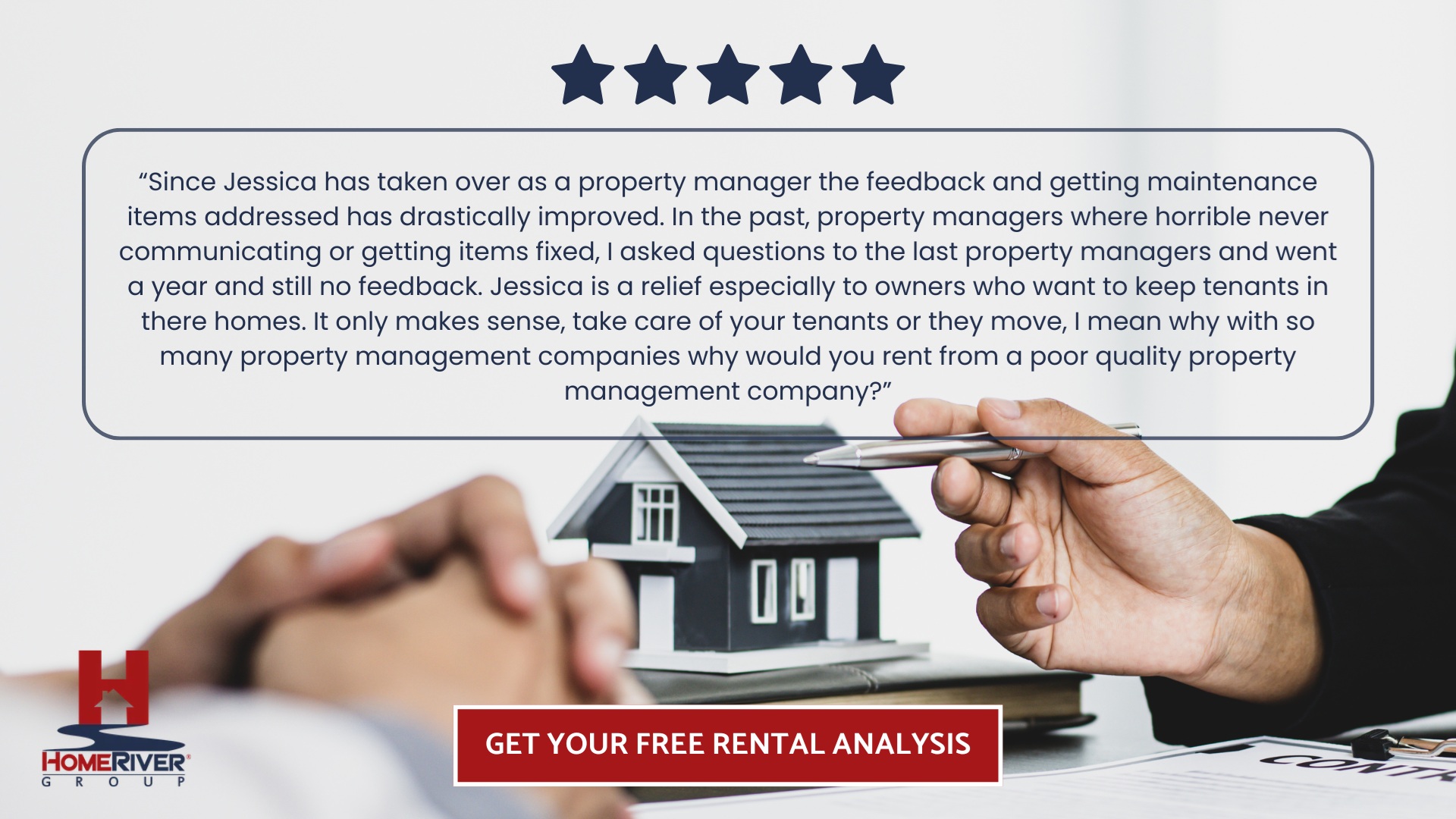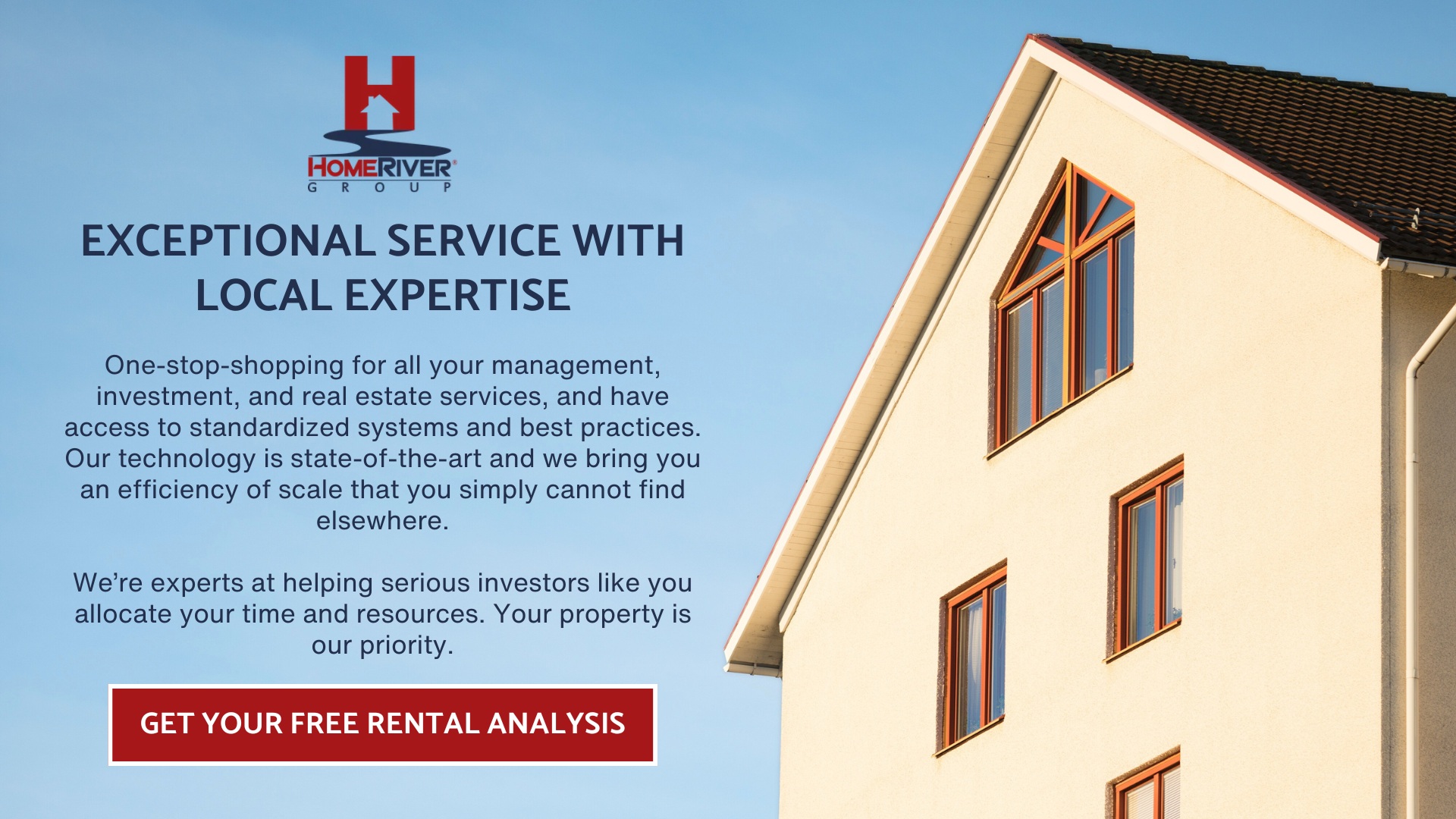Writing a rental property description may seem straightforward, list the details, upload photos, and wait for applicants. But in reality, the words you choose directly impact who shows up at your door. A clear, compelling listing helps set expectations, builds trust, and encourages the right people to act. High-quality tenants are looking for more than just space, they want something that matches their lifestyle, budget, and needs. That’s why the way you describe your rental matters as much as the property itself.
At HomeRiver Group, we don’t just manage properties, we manage performance. With one of the largest single-family rental portfolios in the U.S., we know what it takes to market listings that work. Our team uses proven, data-informed strategies to help property owners reduce vacancy, improve tenant quality, and lease faster. That includes writing listings that are not only accurate but persuasive.
In this piece, we’ll walk through rental property description examples that attract quality tenants, and show you how to avoid common mistakes in your listings.
Why Strong Rental Property Descriptions Matter
A well-written rental property description does more than just list the number of bedrooms and bathrooms, it acts as a first impression for potential tenants. In a competitive rental market, your listing needs to stand out quickly and clearly. The right words can attract responsible renters, reduce vacancy periods, and even increase perceived property value.
Quality tenants are often scanning dozens of listings at once. What grabs their attention? Clean, accurate, and benefit-driven descriptions. They’re not just looking for square footage, they want to picture themselves living comfortably and securely in a space that suits their lifestyle. That's why writing rental listings is both an art and a strategy.
At HomeRiver Group, we know that every sentence counts. From describing the neighborhood vibe to highlighting unique features, strong property descriptions are part of our broader approach to managing rental properties effectively and professionally.
Key Elements Of An Effective Rental Listing
Before jumping into examples, it’s important to understand what makes a rental description effective. The most successful listings don’t just present facts, they communicate value clearly and efficiently.
Here are the core elements that should be part of every well-crafted rental listing:
Headline That Hooks
The headline is your first chance to stand out. Highlight a key feature, such as "Spacious 2-Bedroom with Private Balcony" or "Pet-Friendly Home Near Downtown." Avoid vague titles, specificity earns more clicks.
Accurate Property Details
Clearly state the number of bedrooms, bathrooms, square footage, rental price, and lease terms. Being upfront about key details builds trust and attracts serious inquiries.
Highlight Standout Features
Modern appliances, updated kitchens, hardwood floors, natural light, these are things quality tenants want to see. Don’t just list them. Frame them as lifestyle upgrades.
Neighborhood And Location Info
Mention what makes the location desirable, proximity to public transit, schools, dining, or parks. A brief nod to the neighborhood vibe can help tenants picture daily life there.
Clear And Concise Language
Avoid overly flowery language or long paragraphs. Instead, use short, informative sentences that are easy to scan on a phone or laptop.
Strong Call To Action
End the listing with a simple instruction, such as: “Schedule a tour today” or “Apply now to make this home yours.”
HomeRiver Group includes all of these elements in every listing it manages, because writing rental listings effectively means showing prospective tenants why your property is worth their time.
Rental Property Description Examples That Attract Quality Tenants
The best way to understand what works is to see it in action. Below are several rental property description examples designed to appeal to quality tenants. These examples follow a proven structure that highlights features, communicates value, and gives prospective renters a reason to act.
Each example focuses on a different property type, showing how to tailor the message to suit the space and audience.
Example 1: Urban Apartment For Young Professionals
Title: Modern 1-Bedroom Apartment with City Views & Gym Access
Experience city living in this sleek 1-bedroom apartment located in the heart of downtown. Enjoy floor-to-ceiling windows with skyline views, stainless steel appliances, and in-unit laundry. The building features a 24-hour fitness center, secured entry, and underground parking.
Walk to restaurants, coffee shops, and public transit. Ideal for professionals seeking a vibrant, connected lifestyle.
Example 2: Family-Friendly Single-Family Home In The Suburbs
Title: Spacious 3-Bedroom Home with Fenced Yard and Great Schools Nearby
This bright and open 3-bedroom, 2-bathroom home offers comfort, space, and convenience. The kitchen features granite countertops and updated appliances, while the living area opens onto a fully fenced backyard, perfect for family gatherings or pets.
Located in a quiet neighborhood just minutes from top-rated schools and parks. A two-car garage and central A/C make this home as practical as it is inviting.
Example 3: Townhome Ideal For Commuters
Title: 2-Bedroom Townhome with Garage and Easy Freeway Access
This move-in-ready 2-bedroom townhome combines comfort with commuting convenience. Enjoy an open floor plan, attached garage, and private patio. Located near major highways, with shopping and dining just minutes away.
Perfect for tenants who need quick access to the city but prefer a quieter place to come home to.
Each of these rental property description examples is designed to highlight value, appeal to the ideal tenant type, and create urgency without overselling. At HomeRiver Group, we tailor listings like these to ensure properties attract the right renters from the start, a key part of how we approach managing rental properties.
Common Mistakes To Avoid When Writing Rental Listings
Even the best properties can sit vacant if the listing doesn't communicate well. Writing rental listings that attract high-quality tenants means avoiding common errors that can turn people away or reduce trust. Below are frequent mistakes that property owners and managers should watch out for, and how to fix them.
Being Too Vague Or Generic
Listings that simply say “nice home in a great neighborhood” don’t inspire confidence or interest. Specificity is what sells. Instead of "great kitchen," mention "modern kitchen with quartz countertops and stainless steel appliances." The more clearly you describe the benefits, the more likely you are to attract serious inquiries.
Forgetting To Mention Deal-Breakers Up Front
Leaving out key facts, like pet policies, lease length, or move-in costs, might get you more clicks, but they’ll be from the wrong tenants. Be transparent from the start to avoid wasted time and back-and-forth with unqualified applicants.
Poor Grammar, Typos, Or All Caps
A rental listing filled with errors looks careless, and that reflects poorly on how the property might be maintained. Similarly, writing in ALL CAPS feels aggressive and hard to read. Keep it professional, clean, and error-free.
Overloading The Listing With Features
While it's important to highlight key features, avoid cramming everything into one long sentence or paragraph. Focus on what matters most to your ideal tenant. Let photos fill in the visual gaps, your words should guide and entice, not overwhelm.
Ignoring The Value Of Location Details
A home is more than just four walls. Tenants care about lifestyle, proximity to transit, parks, shops, and schools matters. Briefly mentioning local amenities helps potential renters see how the property fits into their daily life.
At HomeRiver Group, our team knows that a well-crafted listing isn't just about showing off the property, it's about attracting the right kind of attention. That’s why we focus on clarity, accuracy, and strategy when managing rental properties and crafting each listing.
How Homeriver Group Helps Property Owners Market Effectively
Rental listings are more than ads, they’re part of a larger leasing strategy. HomeRiver Group understands that attracting high-quality tenants requires more than just uploading photos and listing specs. It’s about positioning your property for the right audience, at the right time, with the right message.
From listing creation to lease signing, HomeRiver Group provides comprehensive marketing support for property owners who want to minimize vacancy and maximize ROI.
Professional Listing Copy That Converts
Every rental description we create is written with intention, highlighting the most attractive features while addressing what renters actually want to know. Our team uses industry best practices and local market knowledge to craft listings that are clear, compelling, and built to drive action.
Strategic Use Of Photos, Platforms, And Timing
A great description is only part of the strategy. HomeRiver Group ensures that each listing is supported with high-quality images and published on the most effective platforms. We also time listings strategically to reach renters when demand is highest.
Data-Driven Approach To Leasing
Because we’re experts in managing rental properties, we know what works, and what doesn’t. We monitor market trends, tenant behaviors, and response rates to adjust listings and improve outcomes.
Final Thoughts
Renting out your house can be a smart way to generate passive income and build long-term financial stability, but it doesn't have to be stressful. Many of the challenges homeowners face stem from not having a clear plan or trying to handle everything on their own. When you take the time to understand the house rental process, prepare your home properly, and set the right expectations with tenants, you reduce risk and increase your chances of success.
From making sure your home is in top condition to screening responsible tenants and managing lease terms, every part of the process plays a role in protecting your property and your peace of mind. What often feels overwhelming at first becomes manageable, especially with the right support.
That’s where HomeRiver Group comes in. With national reach and locally based teams, we handle the details that most homeowners find time-consuming or complex. From listing and renting your house to tenants to full-service property management, our team works to ensure your property performs well, without the day-to-day hassle on your end.
Whether you're preparing to rent your home for the first time or you're tired of juggling maintenance requests and lease renewals, having an experienced partner can make all the difference. With HomeRiver Group, you gain more than just a management service; you gain a reliable team invested in your long-term success.
Read also:
Fair Housing Laws Explained: How They Protect Apartment Renters
Maryland Security Deposit Laws: What Every Renter Should Know
Washington Landlords: How To Handle Security Deposits Legally
Frequently Asked Questions About Writing Rental Listings That Work
What’s the ideal word count for a rental property description?
Most effective rental descriptions fall between 150–250 words. This range gives you enough room to highlight features and benefits without overwhelming the reader.
Should I write rental listings differently for luxury properties?
Yes. Luxury listings should focus more on lifestyle, exclusivity, and high-end finishes. Use elevated language that matches the tone of the property.
How often should I update my rental property descriptions?
Update descriptions whenever there’s a change in features, policies, or market conditions. Even minor wording updates can help listings perform better.
Can too many adjectives hurt a rental listing?
Yes. Overuse of adjectives can make a listing feel exaggerated or insincere. Focus on factual, benefit-driven language that adds real value to the description.
Is it helpful to include virtual tour or video links in the listing?
Absolutely. Including a virtual tour can increase engagement, especially for out-of-town renters. It reduces screening time and improves lead quality.
What role does SEO play in writing rental listings?
Keywords like “rental property description examples” help listings rank on platforms and Google. But avoid keyword stuffing—write for humans first.
Should I include utility and maintenance details in the description?
Briefly noting what’s included (e.g., “water and trash included”) can clarify expectations and reduce back-and-forth during the inquiry stage.
How do I tailor listings to seasonal demand?
Emphasize features that fit the season. In summer, highlight central air and patios. In winter, note insulation, heating, or covered parking.
Do emojis or informal language help or hurt a rental listing?
Emojis and casual tone can undermine professionalism, especially in competitive markets. Stick with clean, direct language for the best results.
How can I test which version of a listing performs better?
A/B testing with small wording changes (e.g., headlines, CTAs) can reveal what resonates most. Platforms like Zillow may offer data to track engagement.









